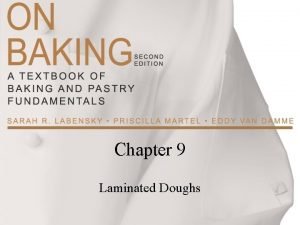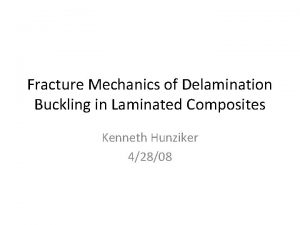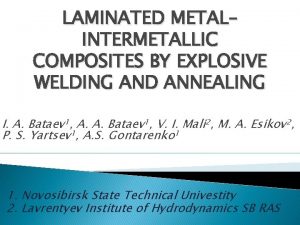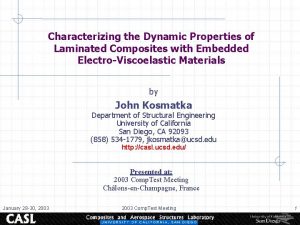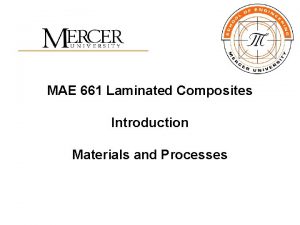Failure criteria for laminated composites Defining failure is








- Slides: 8

Failure criteria for laminated composites • Defining “failure” is a matter of purpose. • Failure may be defined as the first event that damages the structure or the point of structural collapse. • For composite laminates we distinguish between “first ply failure” when the first ply is damaged and “ultimate failure” when the laminate fails to carry the load. • Ultimate failure requires “progressive failure” analysis where we reduce the stiffness of failed plies and redistribute the load.

Failure criteria for isotropic layers • Failure is yielding for ductile materials and fracture for brittle materials. • Every direction has same properties so we prefer to define the failure based on principal stresses. Why? • We will deal only with the plane stress condition, which will simplify the failure criteria. Then principal stresses are • What about the third principal stress?

Maximum normal stress criterion • For ductile materials strength is same in tension and compression so criterion for safety is • However, criterion is rarely suitable for ductile materials. • For brittle materials the ultimate limits are different in tension and compression

Maximum strain criterion • Similar to maximum normal stress criterion but applied to strain. • Applicable to brittle materials so tension and compression are different. What is wrong with the figure?

Maximum shear stress (Tresca) criterion • Henri Tresca (1814 -1885) French ME • Material yields when maximum shear stress reaches the value attained in tensile test. • Maximum shear stress is one half of the difference between the maximum and minimum principal stress. • In simple tensile test it is one half of the applied stress. So criterion is

Distortional Energy (von Mises) criterion • Richard Edler von Mises (1883 Lviv, 1953 Boston). • Distortion energy (shape but not volume change) controls failure. • Safe condition • For plane stress reduces to

Comparison between criteria • Largest differences when principal strains have opposite signs

Maximum difference between Tresca and von Mises •
 Defining and non defining relative clauses in telugu
Defining and non defining relative clauses in telugu Nondefining relative clause
Nondefining relative clause Defining and non-defining relative clauses arasındaki fark
Defining and non-defining relative clauses arasındaki fark Relative clauses defining and non defining
Relative clauses defining and non defining Nonessential adjective clause
Nonessential adjective clause Non defining relative clauses as sentence modifiers
Non defining relative clauses as sentence modifiers Laminated object manufacturing
Laminated object manufacturing Laminated veneer lumber market trends
Laminated veneer lumber market trends Laminated pastry
Laminated pastry










